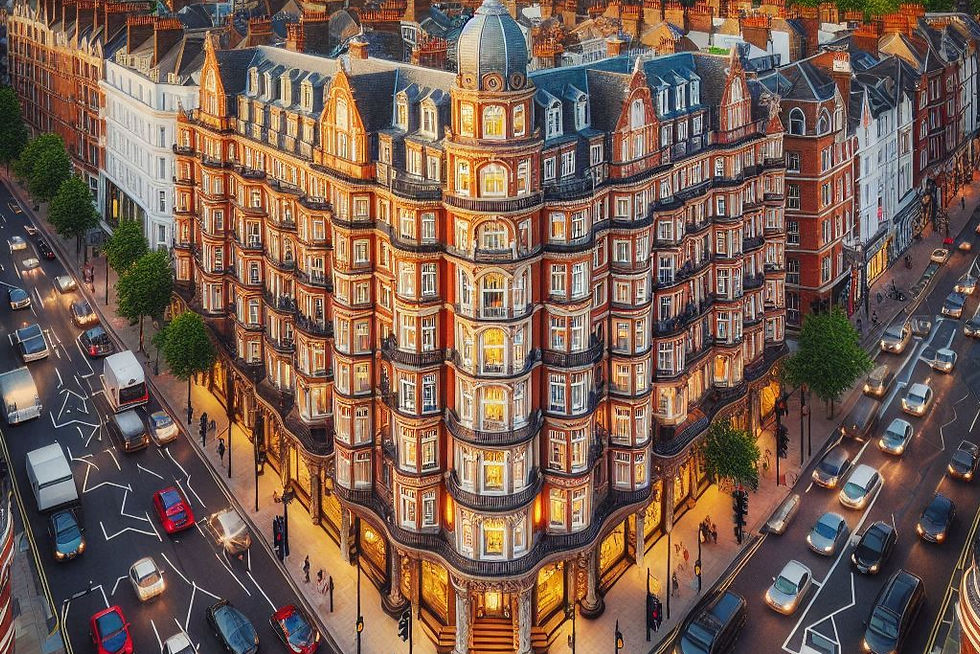THE IMPACT OF THE BUILDING SAFETY ACT ON DOMESTIC PROJECTS IN HIGHER RISK BUILDINGS
- atelier EURA
- May 20
- 4 min read
Updated: Aug 7
(Post by Director Cristina Lanz Azcarate)

A few days ago, I wrote about a supplier who went out of business and discussed how the Building Safety Act is affecting the industry, particularly by changing the rules for domestic clients whose apartments are in Higher Risk Buildings (HRBs). LINK
Since then, I have received several messages asking me to explain the impact of the Building Safety Act on Domestic Projects in Higher Risk Buildings and hence I’ve decided to share what I have learned so far, in hopes of helping anyone who either lives in a Higher Risk Building or in the process of buying an apartment in one that will require building works.
Please note, I have attended talks regularly and spoken with people who specialize in this process. However, since the situation is evolving and everyone is still learning, you should always check the most current information relevant to your specific case.
1. Definitions
Domestic client: A domestic client is someone whose refurbishment project is not for business purposes.
Higher Risk Buildings (HRBs): Following the Grenfell fire, the Building Safety Act 2022 defines an HRB as a residential building in England that is at least 18 meters tall or has at least seven storeys and contains at least two residential units. Be mindful that there are some exceptions.
HRB Register: All HRBs were required to be registered by October 1, 2023, and it is an offense to allow residents to occupy an unregistered HRB after the deadline.
Statutory Approval Period: Officially, this is 2 months (8 weeks). However, a Freedom of Information request (Feb 2025) revealed that, in practice, the approval period had been averaging 18 weeks. The same request showed that only 40% of submissions were being approved. The Building Safety Regulator (BSR) has acknowledged this issue and has been recruiting and training more staff to improve the situation.
2. The basics of the process
a. Check registration: Confirm whether the HRB is registered. LINK
b. Key Building Information (KBI): Within 28 days of registering, the Principal Accountable Person (PAP) must submit all KBI. This typically includes :
Documentation for any ancillary buildings
The main use of the HRB, ancillary buildings, and outbuildings
Any secondary uses
Evidence of historic changes in use
Information on façade materials (cladding, insulation, etc.)
Roof materials information
Structural information
Number of storeys above ground
Energy supplies
Evacuation strategy
(Other relevant matters may apply to your particular building , hence as always, so check)
c. Design considerations: Any design must consider the building strategies within the KBI, the Licence to Alter (LTA) requirements, and current building regulations.
d. Notifiable works: In HRBs, due to the focus on the integrity of party structures (walls/floors between units), fewer works are considered "not notifiable" or "self-certifiable." For example, window replacements and most electrical works are not self-certifiable because they could be altering the integrity of the separation between units. (The precise list of notifiable works can vary, and the BSR has not published a definitive list as context matters.)
e. Building Regulations applications: For HRBs, applications must go through the Building Safety Regulator, not the local Building Control. However, the BSR may delegate inspections and certain functions to local authorities or approved inspectors acting under their direction.
f. Licence to Alter (LTA): Under the new system, your building’s specific LTA agreement must be included in your application to show that the PAP supports your proposal.
g. Team competence: The application must demonstrate the competence and relevant experience of your project team. We understand some contractors have been rejected due to lack of qualifications, procedures, etc. and were advised to spend time choosing a contractor. The Gateways process , makes the BSR application a hard stop (i.e. the BSR must approve before work starts) creating uncertainty for the chosen contractors who may need to wait months after the submission before knowing whether they can work on site.
h. Materials: We have been advised that the application should list the exact materials being used with certifications where/ if relevant, because the list of products will be checked on site after installation by the BSR. The need for traceability and certification of key safety critical materials, especially those affecting fire and structural safety has been emphasised.
Summary of Key Points
The Building Safety Act 2022 introduced strict requirements for HRBs
Registration and compliance with the BSR are mandatory, and non-compliance is a criminal offense
Approval processes have been experiencing delays, and uncertainty
Most works in HRBs now require notification and approval.
Applications must demonstrate both the PAP’s approval and the competence of the project team.
Consequences on refurbs of existing domestic projects:
Domestic project costs for any work have gone up because of all the additional processes required.
The timeline for Gateway 2 for an interior refurbishment in HRB has become equivalent of a planning application because the modelling for the new system did not consider the volume of domestic applications.
Sections of the supply chain, many of whom were focused on the self-certifiable/ small works market, have lost out. For example, the replacement of windows of a kitchen now requires the involvement of many more people.
Small contractors with decades of experience but no admin capacity may need to stay away from HRB projects.
In my humble opinion, with all the above in mind, the risk of unlawful works being carried out as add hock/ DIY by people who are not competent will go up and the purpose of the Act will not be served.
If I have missed anything or there are inaccuracies I should be aware of, do feel free to comment .

Comments